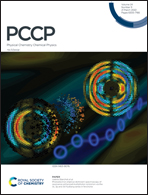Universal shape of graphene nanobubbles on metallic substrate
Abstract
Graphene nanobubbles (GNBs) are formed from matter trapped between a two-dimensional material and a substrate. Such structures exhibit a wide range of new fundamental phenomena and are promising for nanoelectronic applications. However, a central part of the synthesis methods leads to the formation of GNBs with undetermined matter composition. Moreover, none of the GNBs’ synthesis methods allow one to control the type of trapped matter. In a recent paper [K. M. Zahra, PCCP, 22,7606 (2020)], the authors proposed a new approach that allows the production of GNBs on a copper substrate with pure nitrogen inside in a controlled manner. In this work, we continue this research by studying the geometry of the GNBs in detail and indirectly measuring the internal pressure, which depends on the van der Waals adhesion energy and elastic properties of the graphene membrane. In agreement with other studies, we observe that dome-shaped bubbles exhibit universal scaling law, i.e., constant height to radius ratio. However, the measured height to radius ratio differs significantly from the known results of experiments and computer simulations. This deviation is explained by applying the membrane theory and taking into account the high adhesion of the copper substrate and graphene sheet. The adhesion energy calculated based on experimental data is close to the measurements performed by other experimental techniques.



 Please wait while we load your content...
Please wait while we load your content...